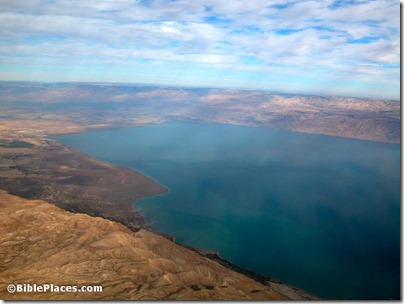The proposal that Sodom has been found on the northeastern side of the Dead Sea has been around for a decade or so, but with the publication of an article by Steven Collins this month it will receive the widest hearing to date. I thought it might be helpful for readers of Biblical Archaeology Review to know where to go for another perspective.
The proposal that Tall al-Hammam is Sodom fails on at least two counts, and these are helpfully summarized by two experts in their respective subjects.
Geography Fail: Bill Schlegel, professor in Israel for 25 years and author of the Satellite Bible Atlas, explains why the biblical text does not fit the geography of Tall al-Hammam.
Chronology Fail: Eugene Merrill, Distinguished Professor of Old Testament Studies at Dallas
Theological Seminary and author of Kingdom of Priests: A History of Old Testament Israel, shows in a recent Artifax article that for Tall al-Hammam to be Sodom one must deny all of the biblical dates before the time of the judges.
I’ve written about the issue several times as well:
Excavator Finds Evidence of Destruction at “Sodom” (Dec 2011)
Video: Search for Sodom and Gomorrah (Aug 2009)
Tall el-Hammam: Sodom, Abel Shittim, Abila, or Livias? (Jan 2009)
Sodom Identified? (May 2006)
One final point: the excavator of Tall al-Hammam insists that by identifying the site as Sodom he is supporting the historicity of the Bible. In fact, if his theory is true, we cannot trust the Bible for accurate details about times and places. Tall al-Hammam is certainly a significant site, but Sodom is surely to be found elsewhere.

Photo from Pictorial Library of Bible Lands, volume 4
3 thoughts on “Arguments Against Locating Sodom at Tall al-Hammam”
Thanks, Todd, for posting this. It is most important as to the relevance of Scripture. Others have also made a persuasive arguments that Tall Hammam is not Sodom. I think BAR did not do due diligence in this case.
A response by Steven Collins:
I strongly encourage readers of this blog to investigate the following links for more detailed discussion of the geography, chronology, and archaeology of Tall el-Hammam in relationship to biblical Sodom:
Collins responds to Wood: http://tallelhammam.com/uploads/Collins_Responds_to_Wood.pdf
Collins responds to Billington: http://tallelhammam.com/uploads/Collins_Answers_Billington.pdf
Collins responds to Merrill: http://tallelhammam.com/uploads/BRB-2013-1-Collins_Answers_Merrill.pdf
My comments in response to B. Schlegel are posted already. In terms of chronology, readers should pay particular attention to Dr. Eugene Merrill’s “Artifax” article contra my identification of Tall el-Hammm as Sodom, and my response to Dr. Merrill (included in the above links). My response to Clyde Billington’s contra-Hammam article in “Artifax” is also given. I also highly recommend reading my response to Bryant Wood’s contra-Hammam article in “Bible and Spade.” It may also be interesting to readers that I recently received a copy of a paper written by a doctoral candidate at Dallas Theological Seminary who independently assesses my views with those of others, including those on this blog. He comes down decidedly on the side of Tall el-Hammam as Sodom, particularly when compared with Bab edh-Dhra. This paper will also be presented in a special OT forum at DTS in the near future. We will also publish a version of it on our excavation website and provide the link when it’s available. It seems that the main objection to Tall el-Hammam as Sodom stems from blind acceptance of the patriarchal lifespan numbers as base-10, arithmetic values among a rather small circle of evangelicals who still rely on the ‘literalistic’ methodology of Bishop Ussher. Such a method puts the Great Flood ca. 2500 BC, even later in some versions. If literalists push the Flood date earlier (say, before 6000 BC or 10,000 BC as many suggest), it is a tacit admission that the numbers are, in fact, not to be taken literally.
David Hansen's comment that "BAR did not do due diligence in this case" is woefully inaccurate and insulting. Not only did Mr. Shanks (BAR owner/editor) call around to numerous notable archaeologists to check on the credibility of the Hammam/Sodom connection, he actually flew to Jordan and took a lengthy site tour at Hammam, accompanied by a top Jordanian archaeologist. And the scholarly world has yet to see any persuasive argumentation against Hammam as Sodom.